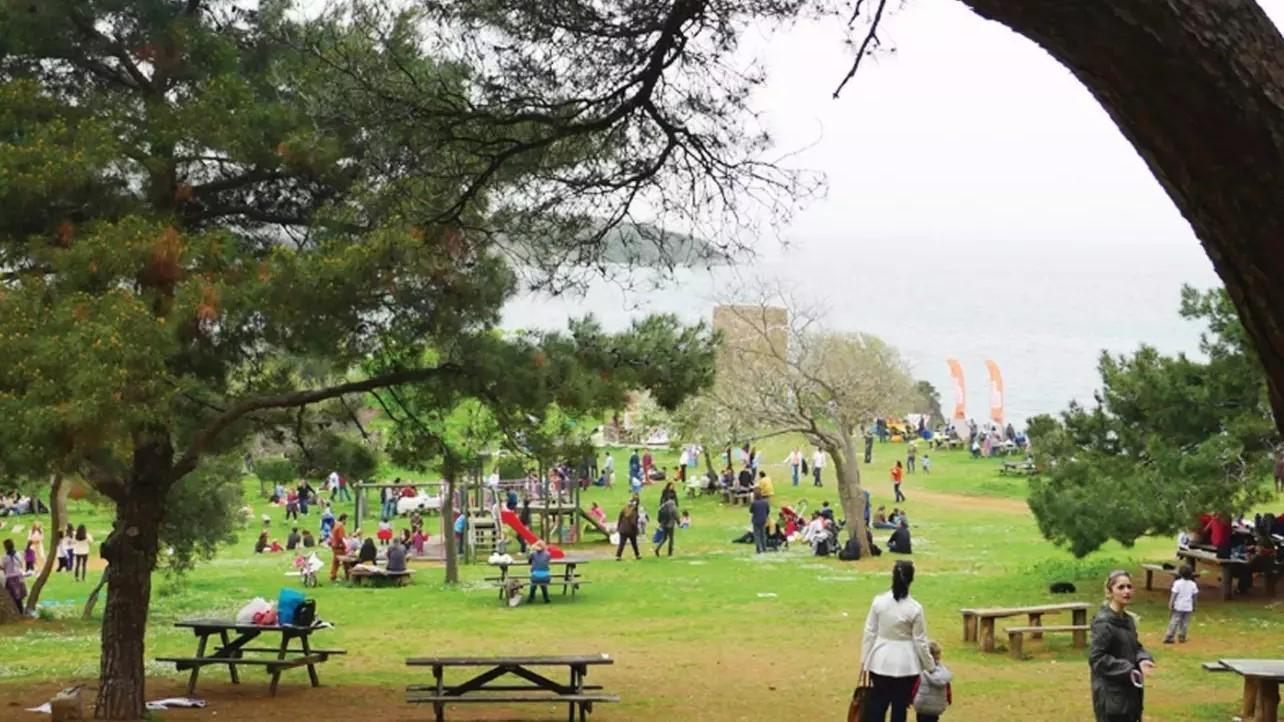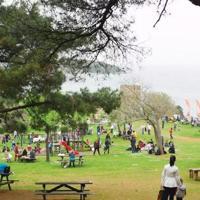
With the weather warming up and the spring rains behind us, picnic season has officially begun. The word ‘picnic’ refers to meals eaten outdoors in the countryside all over the world, but picnics are much more than that. It is a kind of escape from the hassle of daily routine, reconnecting with nature, getting into a different mindset, savoring the joy of idleness. There are often silly games involved which add to the joy of this purposeless, good-for-nothing day outdoors. Packing at least a ball in the picnic equipment is essential, but when it comes to having a good picnic, preparing and packing the picnic food is seriously important. From humble to elaborate, picnic food across the world is always cold but delicious. Or perhaps it is perceived as delicious, even if it is a boiled egg or potato, it is the picnic vibes that makes the food seem to be delicious.
Fresh air, clear weather, plenty to pick & eat
Food is an essential part of a picnic. The word is related to snacking; constant eating morsels of food is the essence of the word “picnic.” The French word ‘pique-nique’ was formed by combining two words. Later it was passed into German as “Picknick” and eventually to other languages. The verb “picquer” in French was originally used meaning to snack little by little, like chickens and birds pecking at food. The word ‘nique,’ rhymes with it, meaning insignificant little things. The English, “picnic” as a word first appeared in the early 1800s, and outdoor lunches in nature became an important part of British culture. In 1861, Mrs. Beeton’s influential cookbook even devoted a special section to picnic food, providing recipes for everything from cold cuts to small cakes and elaborate potted pies. The British have developed a sophisticated picnic culture when it comes to the picnic-ware, involving crystal goblets, porcelain plates, silver cutlery and embroidered napkins, all placed in special slots in beautiful bamboo picnic baskets. Whether the flavor of the food was worthy of such care is debatable, but when we think of an English picnic today, we tend to picture boiled eggs and cold fried chicken thighs and sandwiches of all sorts. Some are quiet alien to the Turkish palate, such as the buttered cucumber sandwiches, which sounds odd yet delicious when well prepared. I’m particularly fond of a good BLT sandwich or Ploughman’s sandwich with a good cheddar and a generous helping of Branston chutney. Then there is also the meat pie filled with jellied pieces of cold meat with a tough-as-chipboard dough, a flavor that I can easily skip.
Turkish love for outdoors
The tradition of going on picnics in Türkiye dates back long before the word “picnic” was invented. It must be our nomadic past that we are attracted to going outdoors at any possible opportunity. Communal eating is in our genes, and no indoor setting is sufficient for such grand conviviality. Then there were always the royal feasts given by the ruler to his subjects. Toy feasts of the Seljuk period were phenomenal, especially when held after a long hunting party with all the game roasted in open fire. It was important for the Sultan to provide a large feast for the people to demonstrate his power, and the people expected both to enjoy the copious amounts of food, but also to pay their loyalty to their leader. The Ottoman period Istanbul offered many leisurely green areas within the city, and Istanbulites have always enjoyed being outside. Especially during the Tulip Era, “Lale Devri” in Turkish, which is known for its leisurely outings in the nature, Sâdâbâd in Kâğıthane became synonymous with its long summer night activities. The Tulip Era is the period in Ottoman history between 1718 to the Patrona Halil Revolt in 1730, a peaceful and leisurely time slot when people were devoted to having a good time before anything else. Sâdâbâd entertainments marked the Tulip Era, and this era was later considered like the last big party before the downfall. The name “tulip” has nothing to do with picnics, it comes from the love, or craze of tulips, which can also signify the Ottoman admiration to gardens and nature, tulips being a symbol of finesse, nobility and privilege, and of course leisure time. Today, all over Anatolia, people still enjoy going outdoors and cooling off in the shade of trees on the riverbanks on hot summer days. Starting from Spring festivals of Nowruz and Hıdırellez, having picnics outdoors throughout the summer is one of the most popular summer pastimes in every city, especially if open fire grilling is involved. When it comes to open fire cooking, Turks know no limits, “mangal” being the word for barbeque is the keyword that triggers the fire in Turkish males, to demonstrate their grilling skills they do anything at all costs. I remember the times, when Turkish migrant workers were setting up their “mangal” equipment right in the traffic island leading to the Bundestag in Berlin, of course, eventually the Germans had to ban that kind of fiery activity in parks.
Humble yet tasty
Picnics in my childhood were the most joyous times. The food was always humble yet tasty. We never played with fire, so “mangal” was out. There were always cold foods prepared at home that could be easily eaten with our hands, such as boiled potatoes and eggs, and sometimes vegan no-meat lentil meatballs, and definitely “zeytinyağlı yaprak dolma” rice stuffed olive-oil based stuffed or rolled vine leaves. Another favorite was “sigara böreği” the so-called cigarette pastries, stuffed by white cheese and parsley and dill. Their fried crispiness would go a bit limp, but they always remained a favorite of children. Another winner by all would be the “kuru köfte” that can be translated as “dried meatball” which is finger-shaped fried meatballs eaten cold. The picnic spot was always meticulously chosen; the best spot would be under a shady tree. While the women set the picnic table which is usually a big blanket or huge ground cloth, the men would set up hammocks and swings for the children. Meanwhile the children would pick a few morsels of food and start chasing after a ball. As time went by, acquaintances were made with other picnickers and friendships developed through mutual food exchanges. Often, the picnic would end with a ball escaping into the stream or exploding and children crying. The last morsels would be quickly consumed, and the picnic would be over. No ball, no game, no fun! The food was always humble yet tasty, served cold, but memories of an old family style picnic are always the warmest!

